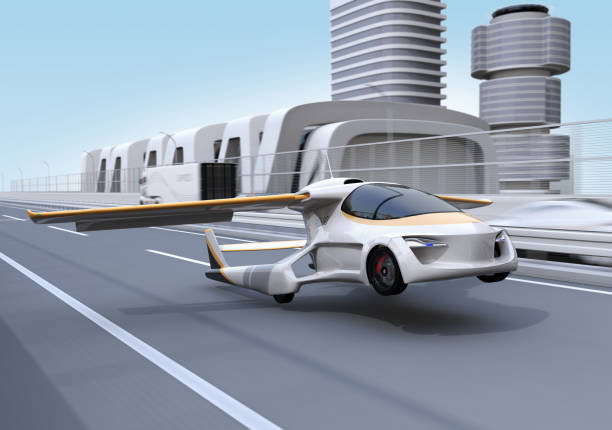In today’s construction industry, efficiency, precision, and sustainability are crucial. One innovative method that has revolutionized this field is mechanical prefabrication. This process involves the off-site assembly of mechanical systems and components, which are then transported to the job site for installation. By preassembling mechanical parts in a controlled environment, mechanical prefabrication ensures enhanced quality control, reduces on-site construction time, and promotes safer work environments. In this blog, we’ll dive into the importance of mechanical prefabrication, its advantages, its applications across various sectors, and how it’s shaping the future of construction.
What is Mechanical Prefabrication?
Mechanical prefabrication is the process of constructing mechanical systems—such as plumbing, electrical, and HVAC (heating, ventilation, and air conditioning)—off-site in a factory or controlled setting. The prefabricated components are later delivered to the project site for final assembly. Unlike traditional methods where all mechanical parts are assembled on-site, prefabrication allows for a streamlined and efficient construction workflow.
These components can include anything from large-scale assemblies like boiler rooms to smaller modules, such as pipe racks, ductwork, and cable trays. As the industry evolves, more complex systems are being prefabricated, pushing the boundaries of what can be achieved off-site.
The Advantages of Mechanical Prefabrication
Mechanical prefabrication offers numerous benefits that make it an attractive option for construction projects. Here’s a closer look at some of the primary advantages:
1. Enhanced Quality Control
- By constructing mechanical systems in a controlled factory environment, quality control processes are streamlined. Prefabrication facilities allow for strict oversight, consistent inspection, and adherence to standards and regulations. This level of control is challenging to achieve on-site due to varying weather, accessibility, and logistical constraints.
2. Time Efficiency
- Time is one of the most significant savings with mechanical prefabrication. Off-site assembly reduces the need for on-site labor and minimizes disruptions in the project timeline. While site preparation or structural framing occurs on-site, mechanical components can be assembled concurrently in the factory, accelerating overall project completion times.
3. Cost Savings
- Prefabrication reduces labor costs as the workforce operates in a more efficient, assembly-line setup. Additionally, it minimizes waste due to the precise cutting, measurement, and construction of components in a controlled setting. Reduced on-site work means fewer delays, which translates to lower overall project costs.
4. Improved Safety
- On-site construction can expose workers to hazardous conditions, but prefabrication allows much of the work to be done in a controlled, safe environment. Factory settings typically provide better equipment, lighting, and ventilation, which reduces the risk of accidents.
5. Environmental Sustainability
- Prefabrication is more sustainable due to waste reduction and efficient material use. Materials are reused where possible, and the controlled environment minimizes waste. Less on-site activity also means reduced carbon emissions from transportation and decreased disruption to local ecosystems.
Applications of Mechanical Prefabrication in Different Sectors
Mechanical prefabrication is versatile and has found applications across various industries, from healthcare and education to commercial real estate and industrial facilities. Here are some examples of its applications across diverse sectors:
1. Healthcare Facilities
- Hospitals and medical centers require extensive HVAC and plumbing systems to maintain sterile, controlled environments. Prefabrication allows for faster construction of mechanical systems, reducing the impact on surrounding areas and minimizing noise and dust during the building process.
2. Education Institutions
- Schools, colleges, and universities often need rapid construction or renovation to minimize disruption to students. Prefabricated mechanical systems enable educational institutions to expand or improve their facilities quickly, ensuring a comfortable learning environment with minimal downtime.
3. Industrial Facilities
- Industrial sites rely on complex piping and electrical systems that need to be robust and precise. Prefabricated mechanical solutions can be custom-tailored to industrial needs, allowing for quick, efficient installation of systems critical to manufacturing and production processes.
4. Residential and Commercial Real Estate
- Prefabrication allows residential and commercial builders to install plumbing, HVAC, and electrical systems quickly. As real estate markets grow and demand rises, builders can deliver homes and offices more efficiently using prefabricated mechanical systems, improving both speed and quality.
5. Data Centers
- Data centers require extensive cooling systems to maintain the temperature of computer servers. Prefabricated HVAC units can be installed with reduced lead times, allowing companies to establish or expand data centers rapidly to meet digital storage demands.
Key Components in Mechanical Prefabrication
Several essential components are commonly prefabricated for mechanical systems, including:
- Piping Systems: For water, gas, and sewage, prefabricated piping modules allow for precise assembly and alignment.
- HVAC Units: Ductwork, air handlers, and other HVAC components can be prefabricated, ensuring consistent air quality and temperature control.
- Electrical Systems: Cable trays, switchgear, and control panels are often preassembled to ensure safety and ease of installation.
- Plumbing Systems: From water supply lines to drainage systems, plumbing can be prefabricated to exact specifications, reducing on-site work.
- Structural Supports: Mounting structures and racks for pipes, ducts, and cables are prefabricated, allowing for easier and faster installation.
Steps in the Mechanical Prefabrication Process
To fully appreciate the efficiency of mechanical prefabrication, it’s essential to understand the steps involved:
1. Design and Engineering
- Engineers and designers create detailed blueprints for the mechanical systems based on the project’s specific needs. Using BIM (Building Information Modeling) and other software, they can map out every detail of the system, ensuring precision before construction begins.
2. Fabrication
- Components are constructed in a controlled factory setting, following the specifications laid out in the design phase. This process includes precise measurements, cutting, welding, and assembly, all overseen by skilled technicians and engineers.
3. Quality Control and Testing
- Every component undergoes rigorous quality checks to meet regulatory standards and client expectations. Testing ensures functionality, safety, and durability, allowing components to be quickly installed once they reach the job site.
4. Transportation and Installation
- Prefabricated systems are carefully transported to the project site, where installation teams complete the final assembly. Since most work has been completed off-site, this phase is generally quicker and requires fewer resources.
Challenges in Mechanical Prefabrication
While mechanical prefabrication offers numerous benefits, there are also challenges to consider:
- Transportation Logistics: Prefabricated components can be large and may require special transportation arrangements. Proper planning and handling are essential to avoid damage during transit.
- Initial Costs: The setup of a prefabrication facility and the technology needed for precision assembly can require significant upfront investment, although the long-term savings often outweigh this.
- Complex Design Adjustments: Changes in design after fabrication can be challenging to implement, highlighting the importance of thorough planning during the initial design phase.
- Skilled Labor Requirement: Prefabrication facilities require skilled workers who are adept with the specialized machinery and quality control processes.
Future of Mechanical Prefabrication
Mechanical prefabrication is evolving rapidly, driven by advancements in technology and an increased focus on sustainability. Key trends shaping the future of this approach include:
- Increased Use of BIM: Building Information Modeling (BIM) enables seamless collaboration across disciplines, allowing mechanical systems to be prefabricated with even greater accuracy.
- Automation and Robotics: Robotics in prefabrication facilities can streamline assembly and reduce human error. Automated cutting, welding, and assembly lines are making production faster and more efficient.
- Sustainable Materials: The focus on sustainability is leading to more environmentally friendly materials being used in prefabricated components. From recycled metals to energy-efficient systems, prefabrication is becoming more eco-conscious.
- Global Adoption: As more regions recognize the benefits of prefabrication, the practice is becoming widespread across different countries and construction sectors, standardizing the approach and making it a global norm.
Conclusion
Mechanical prefabrication represents a significant shift in the way mechanical systems are designed and installed in modern construction projects. Through enhanced quality control, cost savings, improved safety, and environmental benefits, prefabrication is a solution that aligns well with the demands of today’s industry. As technology continues to advance and construction needs evolve, the role of mechanical prefabrication is expected to grow, paving the way for a more efficient, sustainable, and precise approach to construction. For companies looking to stay competitive, adopting mechanical prefabrication is no longer just an option—it’s becoming an essential strategy for success in the construction industry.




